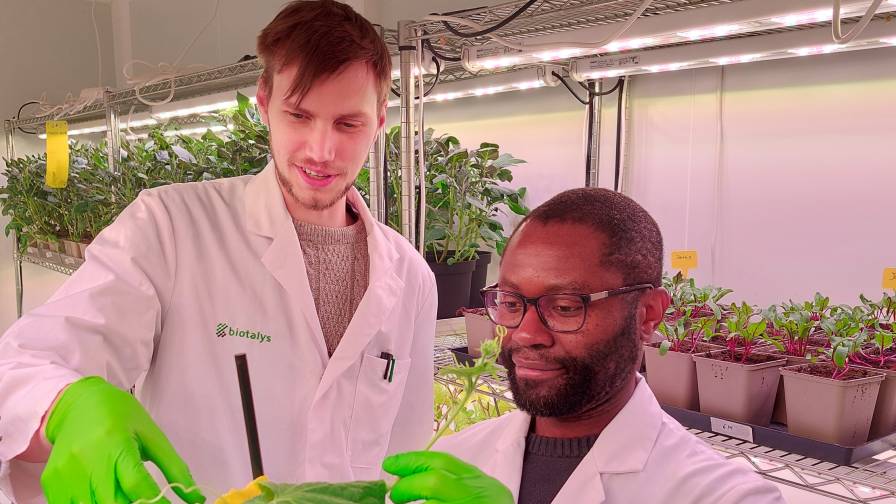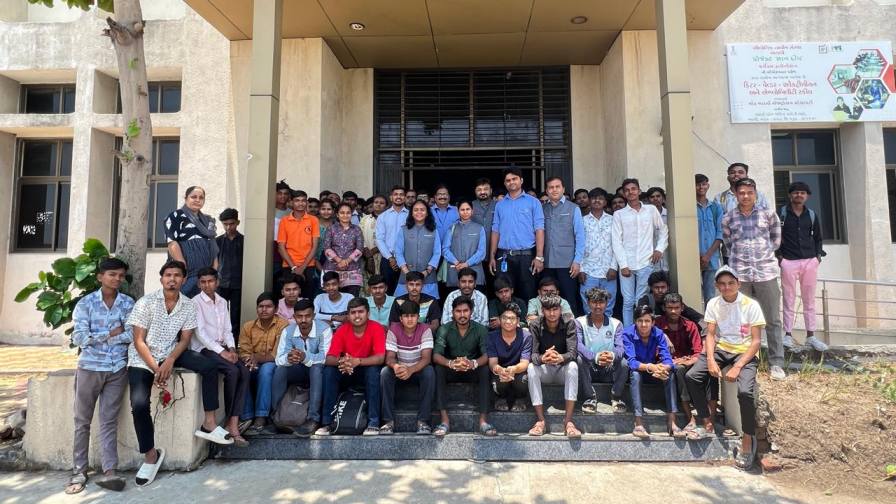Breaking Resistance: Syngenta’s Plinazolin Technology Offers New Hope for U.S. Growers
As insect resistance continues to challenge growers around the globe, Syngenta is bringing Plinazolin technology to the U.S. market. In this interview, Elijah Meck, Syngenta’s Technical Product Lead for Insecticides, shares how this product addresses today’s most pressing pest control challenges — from combating resistance and enhancing IPM strategies to promoting sustainability and expanding global access.
ABG: How does Plinazolin technology’s mode of action differ from existing insecticides, and what advantages does it offer in managing resistant pest populations?
Elijah Meck: Upon registration, Plinazolin technology will represent the first active ingredient classified under IRAC Group 30 available for foliar application. Its mode of action involves binding to a distinct site on the GABA (gamma-aminobutyric acid) receptor — different from the binding sites targeted by existing chemistries within the same neurological pathway. This unique interaction enables Plinazolin technology to disrupt insect nervous systems in a way that current insecticides cannot.

Elijah Meck
No resistance or cross-resistance to Plinazolin technology has been identified in U.S. pest populations to date. This sets it apart as a valuable tool for integrated pest management programs, especially in situations where resistance to other modes of action has compromised control. Field trials and laboratory studies have demonstrated strong performance against several economically significant pests with known resistance challenges, including thrips, diamondback moth, and Colorado potato beetles.
With its differentiated mode of action and broad-spectrum efficacy, Plinazolin shows a significant promise for helping growers manage resistant insect populations while preserving the effectiveness of existing chemistries.
ABG: Could you elaborate on the environmental benefits of Plinazolin technology and how these properties contribute to sustainable agriculture practices?
EM: Plinazolin technology is designed with strong environmental stewardship in mind. Its formulation offers excellent UV stability and rain fastness, meaning the active ingredient remains effective on the plant surface even after exposure to sunlight and rainfall. This stability enhances the product’s residual control, allowing it to maintain efficacy over a longer period without being degraded by environmental conditions.
Because Plinazolin technology adheres well to plant surfaces and is not easily washed off, more of the applied material stays in the target area — the field — reducing the potential for off-target movement. This not only maximizes product performance but also supports responsible application practices.
In terms of sustainability, the combination of long-lasting control and broad-spectrum efficacy means growers may require fewer applications over the course of a season. Fewer spray passes can translate into reduced fuel usage, less soil compaction, and lower greenhouse gas emissions — key components of sustainable agriculture.
ABG: What is the anticipated timeline for Plinazolin technology’s availability in the U.S. market, and which crops will it initially target upon registration? What other markets will it be launched in?
EM: The EPA has proposed its decision to register Plinazolin technology, and we anticipate receiving a final registration decision later this year. Upon approval, Syngenta plans to introduce the technology across a broad spectrum of crops. We have submitted registration applications for a wide range of uses, including vegetables, tree fruits and nuts, row crops, and other specialty crops.
Internationally, Plinazolin technology is already registered in several key agricultural markets, including countries in South America, Asia, and Australia. These early market introductions have provided valuable insight into the product’s performance and potential. We anticipate expanding registrations into additional global markets over the coming years, further supporting growers with a novel tool for managing resistant pests and improving crop protection strategies worldwide.
ABG: In what ways does Plinazolin technology integrate into existing integrated pest management (IPM) programs, and how does it complement other biological control methods?
EM: Plinazolin technology will serve as a valuable addition to IPM programs, offering growers a novel tool to strengthen their overall pest control strategy. Effective IPM relies on a multifaceted approach, including cultural practices, biological control, accurate pest identification, and adherence to economic thresholds. When chemical intervention is necessary, it is critical to rotate modes of action to mitigate the development of resistance. Upon registration, Plinazolin technology will introduce a new mode of action to the foliar insecticide space — IRAC Group 30 — which will be especially beneficial for resistance management and reducing reliance on older, overused chemistries.
In addition to its unique mode of action, Plinazolin technology delivers high efficacy and extended residual control across a broad spectrum of target pests, without triggering flare-ups of secondary pests. This reliability makes it a strong fit within IPM frameworks focused on long-term sustainability and pest suppression.
Regarding its compatibility with biological products, Plinazolin technology can play a complementary role depending on a grower’s objectives. For instance, it may be used early in the season as a foundational treatment to reduce initial pest populations and create a more manageable environment for subsequent biological applications. It can also be integrated later in the season if pest pressure exceeds the control capacity of biological agents. This flexibility allows growers to tailor their programs, enhancing both the performance and resilience of their crop protection plans.
ABG: Can you discuss application methods for Plinazolin technology, and its effectiveness across different crop types?
EM: Syngenta has submitted registration packages for multiple use patterns, including foliar applications, soil-applied use at planting in corn, and seed treatment applications in cereals. This broad range underscores the adaptability of Plinazolin technology and its potential to address diverse pest challenges across production systems.
In field trials, Plinazolin technology has demonstrated strong foliar efficacy against a wide array of economically significant pests. Examples include plant bugs in cotton, codling moth in apples, and diamondback moth in brassicas — illustrating its performance across both row crops and specialty crops. Additionally, its efficacy extends below ground. When applied at planting in corn, Plinazolin technology has shown robust control of corn rootworm, one of the most destructive pests in North American row crop production. As a seed treatment, it has also delivered highly effective control of wireworms in cereal crops, providing early-season protection when pest pressure is often most critical.






